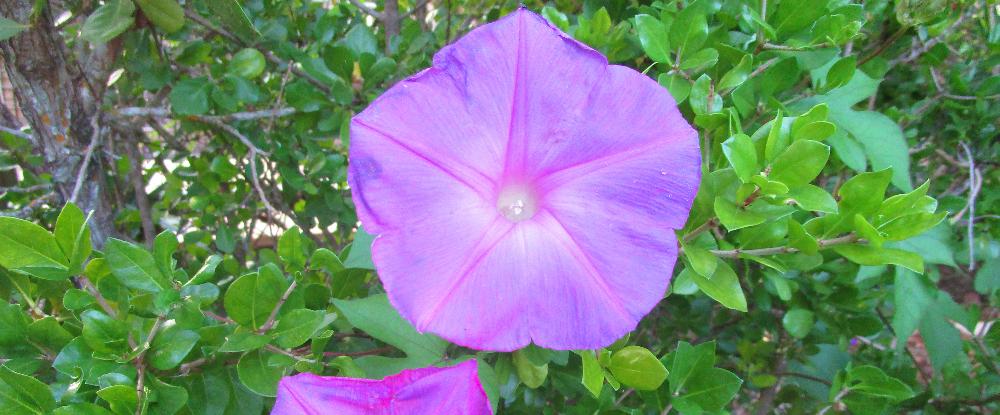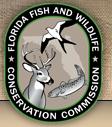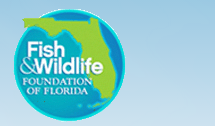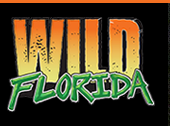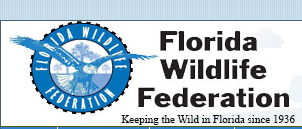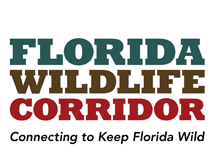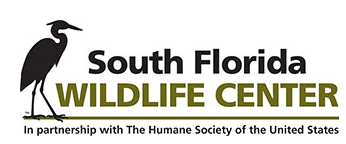You can edit text on your website by double clicking on a text box on your website. Alternatively, when you select a text box a settings menu will appear. your website by double clicking on a text box on your website. Alternatively, when you select a text box
A Creek flows through it...Wildlife in Oyster Creek

Insects are relatively easy to find in Florida. Some of them, like the mosquitoes, will always find you first! So you don't have to look out for them. Others are more difficult to detect.
This giant grasshopper is common in Florida. Having only one "pet grasshopper" in your yard is okay. If the whole grasshopper community shows up, your garden may look different in a heartbeat. It is always a question of balance.
Your gateway to the beautiful and vibrant ecosystem of sunny Florida!
The warm, humid climate of Florida attracts a diverse array of wildlife, including insects, bugs, mites, ticks, and centipedes. Rather than viewing them as pests, unless they are invading our house, we celebrate them as an integral part of Florida's rich and diverse ecosystem.
You may come across tons of bugs at some point in your life. Some are good Florida bugs, although you might not want to have a giant "pet spider" in your house. Some bugs are nasty, like fire ants, termites, or wasps. Others are plain ugly or a nuisance at certain times. When Love Bugs swarm together during mating season, they can drive you crazy. They are in your hair, crawling in your face and clothes, and sticking to your car. Fortunately, that happens only for a few days yearly, but it is nasty enough. But Love Bugs belong to Florida like thunder and rain, and at least they do not sting.

Florida has the richest concentration of amphibians of any State in the USA. Many species are easy to see; others are hiding in tight spots. They usually come out after a bit of rain.
Take a flashlight and walk around a pond, and you will see them feeding on insects while insects feed on you. But most likely, you will run into Tree Frogs. They like to take advantage of human infrastructure. You will find them in hurricane shutters, garage doors or remotes, and cars. You name it, and the frogs are already there.
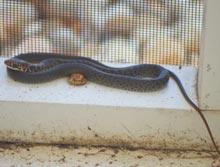
There are 45 species of snakes in Florida. Considering that number, everybody thinks he will trip over one daily. The truth is that you will have to look hard if you want to see any of them. They are masters of camouflage and can stay on the spot forever - without any movement.
Most of them have a coloration that makes it even harder to see them. But if you see a relatively small one with vibrant red, yellow, and black banding, leave it alone. Coral snakes are the most poisonous snakes in America and the world. Their venom contains potent neurotoxins. But the good news is that they have no teeth. They must chew a little while on your skin to get the toxin inside. A rattlesnake is different: it takes a bite within a fraction of a second, and you are in trouble.
Florida is a dangerous place. But wait a second. You're more likely to get killed by lightning than a Florida snake. About seven people die from lightning in the state yearly, whereas some five people die from venomous snake bites annually in the U.S.

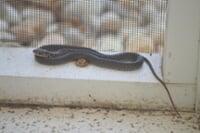
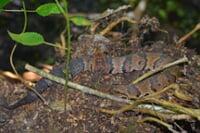
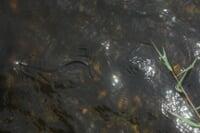
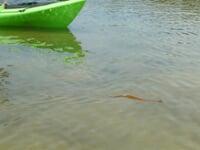

Alligators are abundant in Florida; you can find them basking in the sun. They are everywhere, on canal banks and beside rivers and lakes. When there is a hole with water in it, the chances are that there is a gator as well.
Usually, they do not attack humans, but you must be cautious. Gators are still wild animals; therefore, their behavior is always unpredictable. Especially during mating season, they tend to act more aggressively. Keep a safe distance between you and them, and you are good to go.
They can't run long distances, but they are pretty fast sprinters. Over a short span of ten yards, they can be fast. However, it is a myth that they can run faster than a healthy human, but you need to run.
Especially if you see baby gators, be prepared for a sprint. Mother is somewhere and keeps an eye (or two) on her little ones. Mother gators don't negotiate.
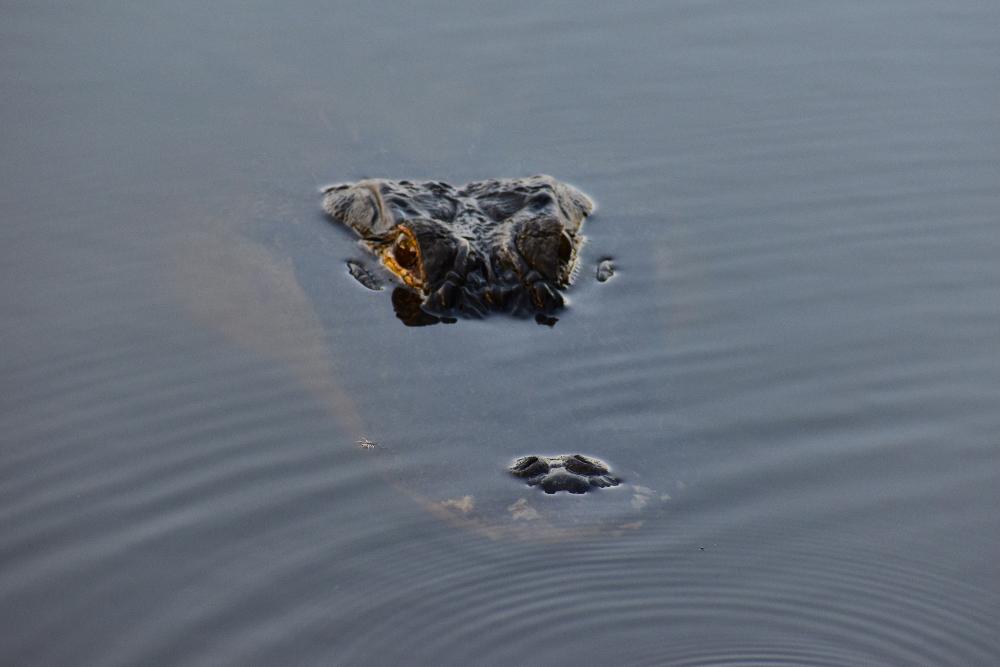





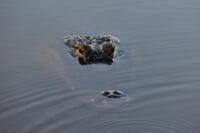
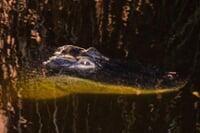
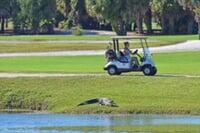
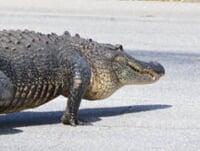
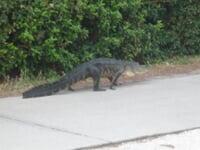
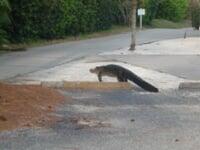
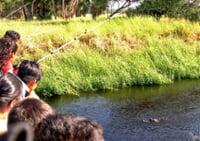
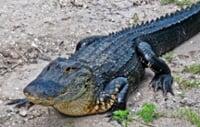
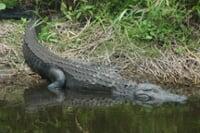
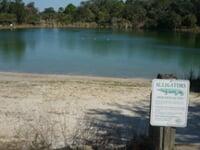
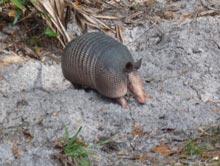
When the Spanish encountered these "shelled mammals" in the New World for the first time, they gave them the name "armadillo." That means "little-armored one." Armadillos are nearly hairless and covered with armor-like plates, making them difficult to mistake for any other mammal. That name is a pretty good description of those little critters.
Armadillos are no native Floridians. Circuses brought them to Florida from South America, and some managed to escape. Well, they love it here, like the snowbirds. Who can blame them?
Usually, they hide in dense underbrush, but once in a while, they will come out. The vision of a "little-armored one" is feeble, but those animals can hear very well. Don't talk or move if you want to watch them - stand still. They will not see you, but when they notice a noise or a strange vibration, they immediately take off and hide in the thick underbrush again.
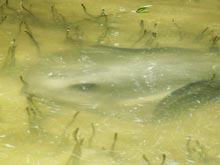
You can find excellent fishing spots almost anywhere in Florida, but you may need a local guide to find "the real ones." First, you could try one of the freshwater lakes and rivers. You could also explore the tidal flats and bays. If you still don't catch anything, take a boat and travel farther offshore into the Atlantic Gulf Stream or the Gulf of Mexico. There are some artificial reefs and other spots where grouper and trout hang out.
However, some fish you may encounter quickly in shallow water along the beach, even if you do not want to. But don't step on them! Especially in the springtime, you must be careful when walking into the warm water. "Shuffle" your feet when entering the water in May/June because stingrays may be hiding in the sand. They are masters of camouflage!
Step on one, and he will ram his barb into your flesh. That is his way of communicating with you. While the fish takes off, "you will hear the angels singing." That guy leaves you with a harrowing experience behind while he doesn't care about your well-being. That is not yet an act of aggression. What else can you do when you are a relatively small fish and a 200 lbs "monster" steps on you?
Crocs vs. Gators
"We don't have crocodiles in Florida; they are all alligators," many people say in Florida. Is that true? Well, let's see. The order of Crocodilia (or Crocodylia) is large and incorporates many lizard-like semi-aquatic reptiles. They are the closest living relatives to birds, although they do not look like they have anything in common with birds. The order of the Crocodilia includes three families: the true crocodiles (Crocodylidae), the alligators and caymans (Alligatoridae), and the fish-eating Gharial and false Gharial (Gavialidae). All those lizards belong to the order of crocodiles. That is the umbrella. But looking one step down at the family level, Florida is blessed with "alligators."
Now, does it matter? How can you know who is who? Crocodiles have a more v-shaped (pointed) snout, and the teeth are visible even when their mouth is shut. You may find them in Bay areas because they can tolerate saltwater, whereas alligators prefer freshwater. But their distinctive features are less prominent. You might only be able to differentiate them if you see them next to each other. But let's leave them alone instead of counting teeth.
Yes, we have crocodiles in Florida, but their population is small. Maybe 5% of all the big lizards are crocodiles.
The crocodiles in Australia or Africa show a pretty aggressive behavior. They jump out of the water and drag you in if you are coming too close. Florida's alligators are not that nasty. You can kayak in waters with alligators, and no one will attack you. Alligator attacks are still rare in Florida, but things can go wrong once in a while. But chances of getting hit by lightning are way higher than getting bitten (or eaten) by a gator.
When you see a gator in your pathway, the best thing you can do is to give it some "leeway." That guy is probably on a mission to another lake or looking for a girl. The "problem gators" are the ones that humans have fed. Their walnut-size brain is still a tiny processor for such a big animal, and they can not distinguish between the chicken piece of food and the big piece of meat that feeds them the food. Therefore, he will take the whole thing with everything attached to it to be safe.
By the way, there is a hefty penalty for feeding gators, and that makes sense. When a gator is not afraid of humans anymore, the poor guy needs to be destroyed. If you want to train him not to bite anymore, that might take another 100 million years.
Florida has the highest number of alligators in all of the United States of America. Your odds of actually being bit by an alligator are 1 in 24,000,000. Your odds of winning the lottery are 1 in 23,000,000. So, if you fear alligators, go by a lottery ticket because your chances of winning the lottery are the same or even better than your chances of getting killed by an alligator! And remember, it is always the human's fault if something happens. That human brain should be bigger than a walnut, although size doesn't always matter.
Now, why do they call some turtles and some tortoises?
All shelled reptiles are turtles, but turtles on land are called tortoises. The Gopher "Turtle, "on the endangered species list, is a Gopher Tortoise because it lives on land.
The loggerhead, also classified as a threatened species, spends most of her life in the water. Therefore, this shelled animal is called a "(sea) turtle." Sea turtles only come on land during the nesting season, from April through October. The female loggerheads crawl on the beach to lay about 100 eggs when ready. That usually happens in the middle of the night while predators should be sound asleep.
Because only one in 1,000 turtles survive to maturity, it is no wonder they are on the endangered list. The U.S. Endangered Species Act protects Sea Turtles and their nests. Therefore, don't destroy or touch a sea turtle nest because the fine for doing that is painful. Check www.myfwc.com for more information. In spring, you will see stakes and yellow ribbons marking some spots on the beach. Those markers indicate where a turtle nest is. Don't start digging there! Build your sand castle a little further away.
A Word about Native Plants
When the Europeans arrived in America, they did not only bring their animals with them; they also brought plants over the big pond. Some were very helpful and thrived in their new environment, but some became natural pests because they had no "enemies "to control their proliferation.
The Australian Pine Tree, which is not a pine, or the Brazilian Pepper Tree are nuisances. Humans planted them with good intentions, but the trees become so invasive that they are impossible to control. Only people can kill them because no other plant or animal in Florida can harm them.
Fortunately, Florida has more native plants than any other state in the U.S. (except Hawaii). For now, no exotic plant could take over and destroy Florida's native vegetation. But here and there, some invasive plants did what they were supposed to do; they invaded. Therefore, residents still need to watch those guys before they suffocate the whole area.
What are native plants? Florida's Red, Black, and White Mangroves protect Florida and grow along the shoreline. They are crucial to many aquatic species. Local and state regulations protect them because they are highly beneficial. The colossal Banyan trees and Laurel and Diamond Oaks are locals. South Florida also has many fruit-bearing trees, like orange, grapefruit, and lemon.
Charlotte County: Prohibited Trees
- Australian Pine
- Banyan Tree
- Brazilian Pepper
- Carrotwood
- Chinese Tallow
- Cuban Laurel
- Downy Myrtle
- Eucalyptus
- Indian Rosewood
- Melaleuca
- Rubber Tree
- Silk Oak
- Strangler Fig
- Weeping Fig
Don't plant those trees. They are invasive and many of them are spreading like crazy.

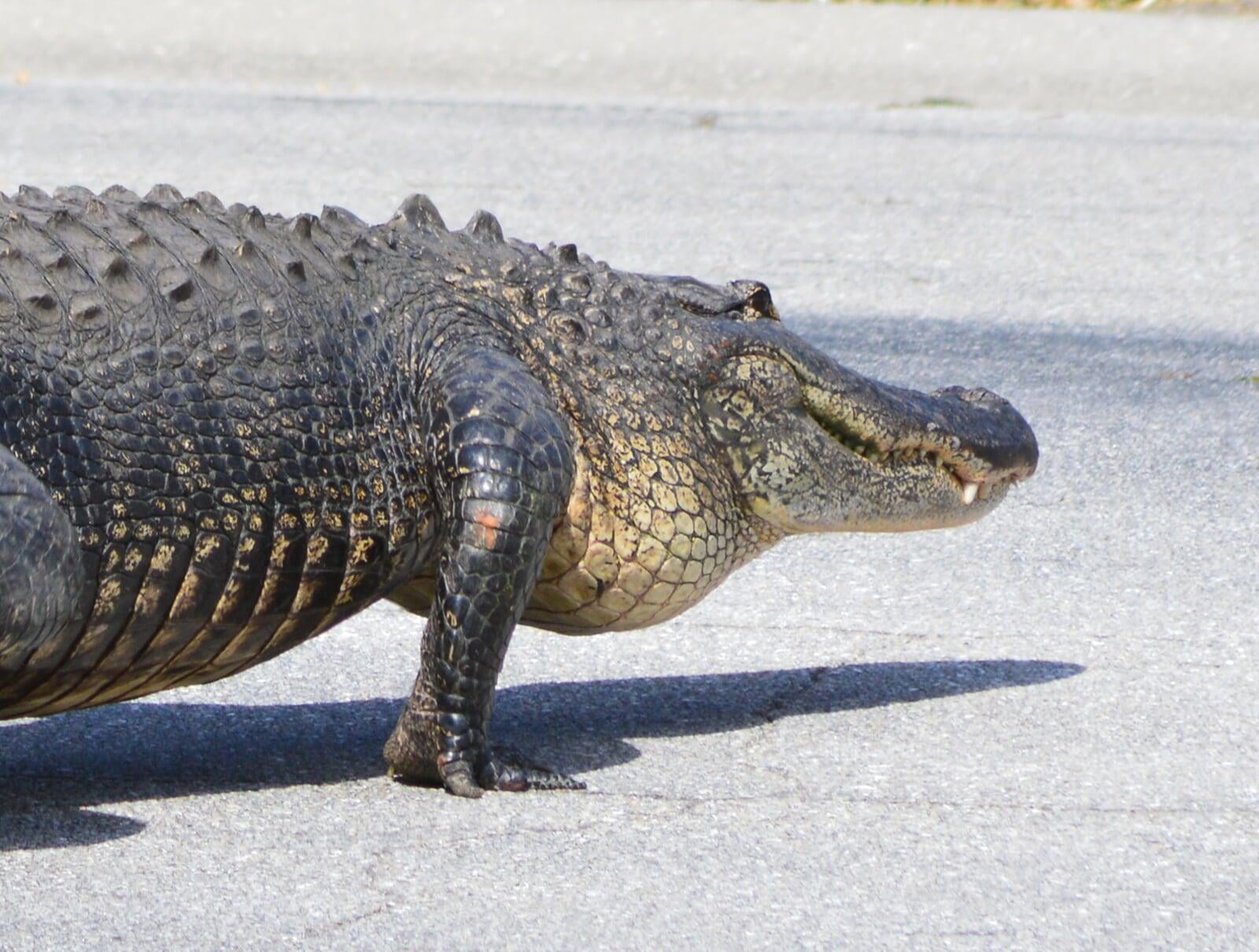
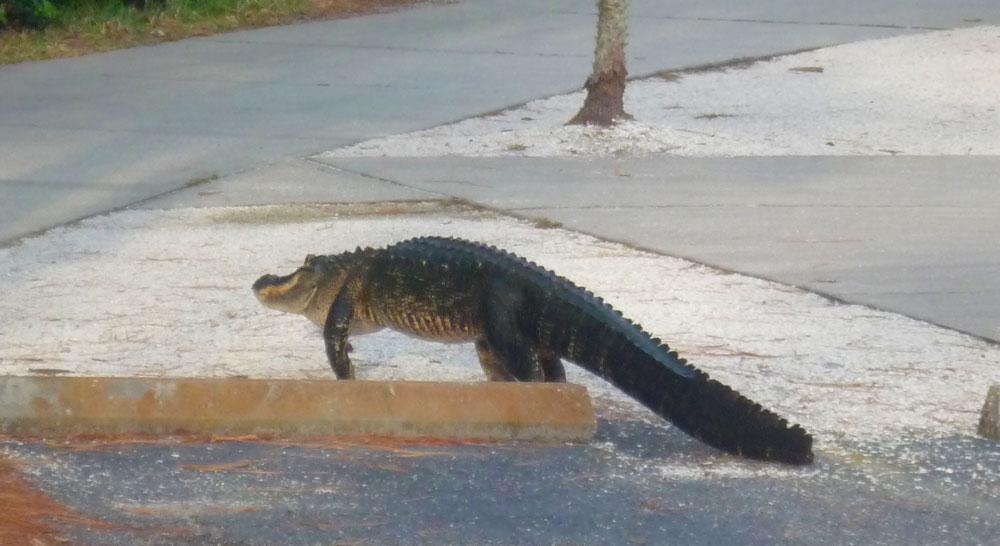
.jpg)
